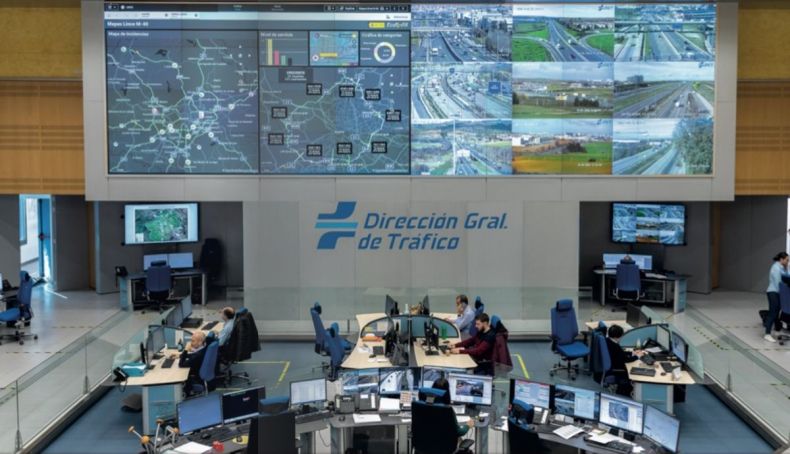Electronic sensors, cameras, artificial intelligence (AI), data, the Internet… The DGT is already combining a whole series of technologies to improve road safety, traffic management and road surveillance and control.

Known by the acronym ITS, Intelligent Transport Services (Servicios Inteligentes de Transporte in Spanish) are part of a new strategy used by the DGT in the control of roads and streets with the aim of obtaining safer and more sustainable mobility. The use of all kinds of new information and communication technologies is becoming more widespread and the improvement of data transmission and the Internet, together with new devices and the rise of AI, is already causing a real revolution in the entire field of road safety.
With the aim of collecting as much data as possible, and in real time, instant analysis allows for better decisions to be made regarding traffic and safety, through new structures that increase traffic efficiency and also reduce polluting emissions.
As the DGT has already reported, “as the entity responsible for traffic in most of Spain, there is an army that is prepared to obtain data and transmit it. We use all available sources of information, cameras, number plate readers, data collection stations, vehicle counting stations. And even the Guardia Civil itself and 112, with which we are integrated,” says Ana Blanco, deputy assistant director of Traffic at the DGT.
All these ITS are then concentrated around the Traffic Management Centres (CGT), of which the DGT has up to 8 throughout Spain: Madrid, Seville, Zaragoza, Malaga, Valencia, Palma de Mallorca, A Coruña and Valladolid. Between them, there are now 2,628 television cameras, 2,147 data collection stations, 2,863 variable message panels, 1,003 number plate recognition systems, among thousands of other devices. In addition to these, there are up to 435 people, responsible for coordinating all the information in favour of intelligent mobility.
But what exactly is the ITS plan that the DGT has already developed?
ITS focuses on three different areas, such as road safety, traffic management, and surveillance and control.
The ITS plan in Road Safety
Developed and implemented by the DGT for junctions, conventional roads, sections with the presence of vulnerable users and crossings, it includes the following:
- Automated diversion for adverse weather conditions (fog or wind).
- Automated diversion in unique infrastructures due to incidents or natural disasters.
- System for guiding traffic in adverse weather conditions.
- Smart crossings.
- Automatic detection of animals on the road.
- Detection of vulnerable users on the hard shoulder.
- Push buttons for activating light signals at points of special risk for pedestrian road safety.
The ITS plan in traffic management
Developed and implemented by the DGT to secure singular points, strategic deployments, areas of adverse weather conditions, and to improve the use of public transport and the expansion of coverage and creation of urban or interurban interfaces, it includes the following:
- Reversible lanes.
- BUS-VAO (lanes for vehicles with more than one person in) lanes.
- Travel times – Smart Routing.
- Automated diversion in winter road conditions.
- Dynamic adaptation of speed limits.
- Access control and management system on roads with exceptional traffic measures.
The ITS plan in surveillance and control
Developed and implemented by the DGT for sections with specific surveillance needs, it includes the following:
- Control of speeding at fixed speed cameras.
- Speeding control in sections through section radars.
- Dynamic adaptation of speed limits linked to radar.
- Traffic light control system for vehicles passing through red light phase.
- System for controlling the correct execution of stop detection (stop signs).
- Seat belt usage detection.
- Sections with speed limit violation warning signs showing number plates.
- Sections that display a warning after detecting non-compliance with the safety distance.
Discover more from N332.es - Driving In Spain
Subscribe to get the latest posts sent to your email.

You must be logged in to post a comment.